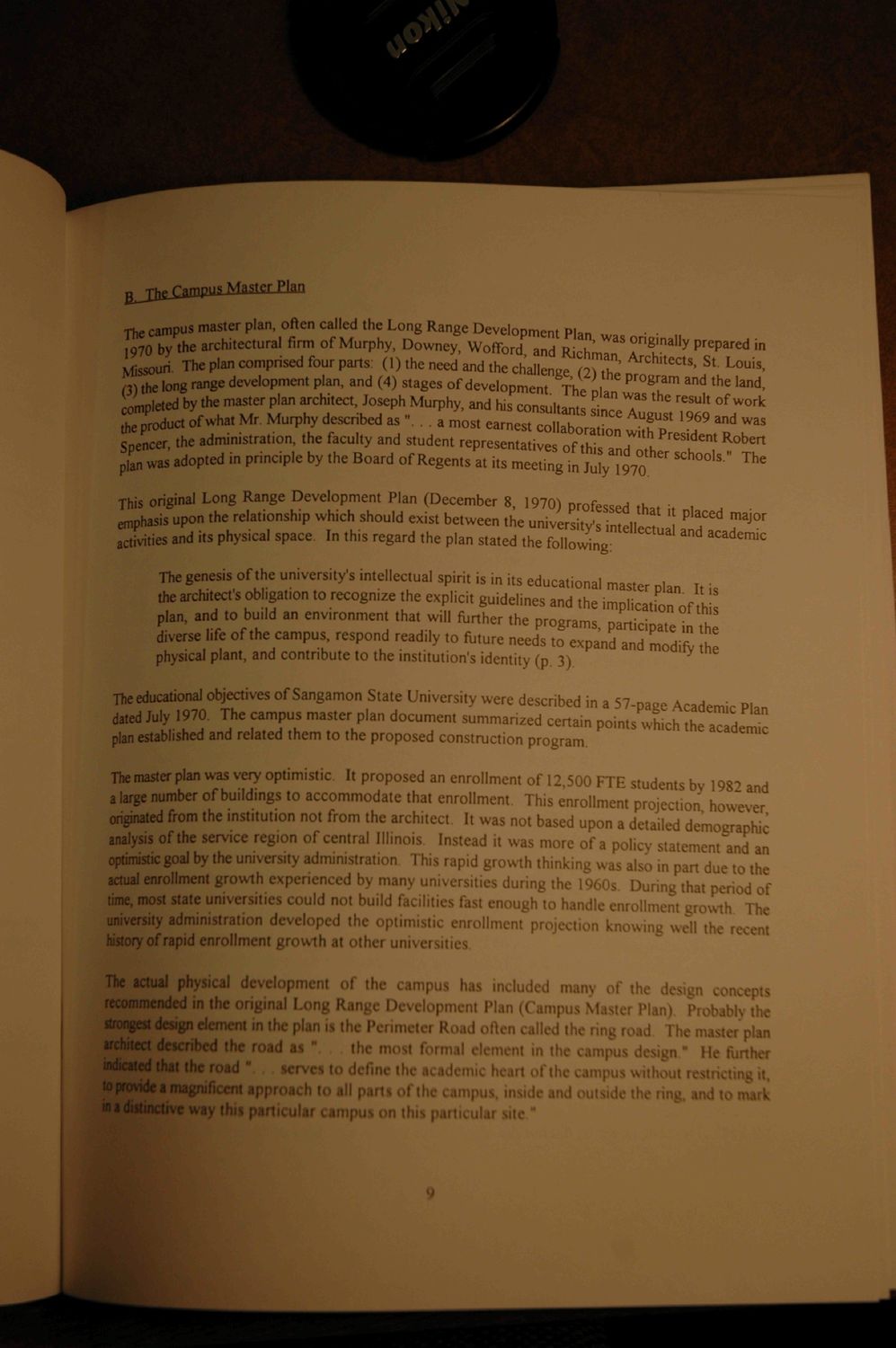| |
| |
Caption: UIS History 1969-1995 (Sangamon State Univ)
This is a reduced-resolution page image for fast online browsing.

EXTRACTED TEXT FROM PAGE:
pjftg^anipua Master Plan The campus master plan, often called the Long Range Development Plan J970 by the architectural firm of Murphy, Downey, Wofford and SZT TTMy prepared in ifissouri. The plan comprised four parts: (1) the need and the c h a l l e n g e d Arch,tects > S t L ^ » , O) the long range development plan, and (4) stages of development The „lan P " > 8 [ T ™d t h e landLLleted by the master plan architect, Joseph Murphy, and his consultant! • W.aS e result o f w o r k TprSuctofwhat Mr. Murphy described as".. | ft e m e a ^ t l T * * W 1 9 6 9 a n d ^ JencVr, the administration, the facu.ty and student « P ^ S 2 5 ^ ^ P , " i ^ * * " plan was adopted in principle by the Board of Regents at its meeting in Juty WO ^ us original Long Range Development Plan (December 8, 1970) professed that ;, , emphasis upon the relationship which should exist between the university's intell^ P ^ major activities and its physical space. In this regard the plan stated the following: academic The genesis of the university's intellectual spirit is in its educational master olan it i. thearchhertscMgation to recognize the explicit guidelines and the implication oftW plan, an to build an environment that will further the programs, participate in the d.verse life of the campus respond read.ly to future needs to expand and modi* he physical plant, and contribute to the institution's identity (p. 3) The educational objectives of Sangamon State University were described in a 57-naee Academir PI dated July 1970. The campus master plan document summarized certain points which the acTd• • plan established and related them to the proposed construction program. The master plan was very optimistic. It proposed an enrollment of 12,500 FTE students by 1982 and a large number of buildings to accommodate that enrollment. This enrollment projection; however originatedfromthe institution not from the architect. It was not based upon a detailed demographic analysis of the service region of central Illinois. Instead it was more of a policy statement and an optimistic goal by the university administration. This rapid growth thinking was also in part due to the actual enrollment growth experienced by many universities during the 1960s. During that period of time, most state universities could not build facilities fast enough to handle enrollment growth. The university administration developed the optimistic enrollment projection knowing well the recent history of rapid enrollment growth at other universities. The actual physical development of the campus has included many of the design concepts recommended in the original Long Range Development Plan (Campus Master Plan). Probably the strongest design clement in the plan is the Perimeter Road often called the ring road. The master plan architect described the road as " the most formal element in the campus design." He further indicated that the road". . serves to define the academic heart of the campus without restricting it, io provide a rnagroficcnt approach to all parts of the campus, inside and outside the ring, and to mark m i distinctive way this particular campus on this particular site," 9
| |